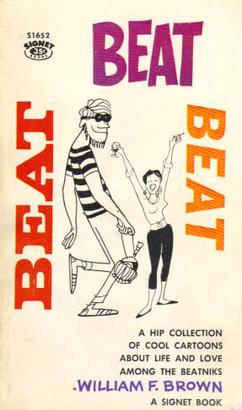#beatnik

Beatnik
Media stereotype based on characteristics of the Beat Generation
Beatniks were members of a social movement in the mid-20th century, who subscribed to an anti-materialistic lifestyle. They rejected the conformity and consumerism of mainstream American culture and expressed themselves through various forms of art, such as literature, poetry, music, and painting. They also experimented with spirituality, drugs, sexuality, and travel. The term "beatnik" was coined by San Francisco Chronicle columnist Herb Caen in 1958, as a derogatory label for the followers of the Beat Generation, a group of influential writers and artists who emerged during the era of the Silent Generation's maturing, from as early as 1946, to as late as 1963, but the subculture was at its most prevalent in the 1950s. This lifestyle of anti-consumerism may have been influenced by their generation living in extreme poverty in the Great Depression during their formative years, seeing slightly older people serve in WWII and being influenced by the rise of left-wing politics and the spread of Communism. The name was inspired by the Russian suffix "-nik", which was used to denote members of various political or social groups. The term "beat" originally was used by Jack Kerouac in 1948 to describe his social circle of friends and fellow writers, such as Allen Ginsberg, William S. Burroughs, and Neal Cassady. Kerouac said that "beat" had multiple meanings, such as "beaten down", "beatific", "beat up", and "beat out". He also associated it with the musical term "beat", which referred to the rhythmic patterns of jazz, a genre that influenced many beatniks.
Thu 25th
Provided by Wikipedia
This keyword could refer to multiple things. Here are some suggestions: